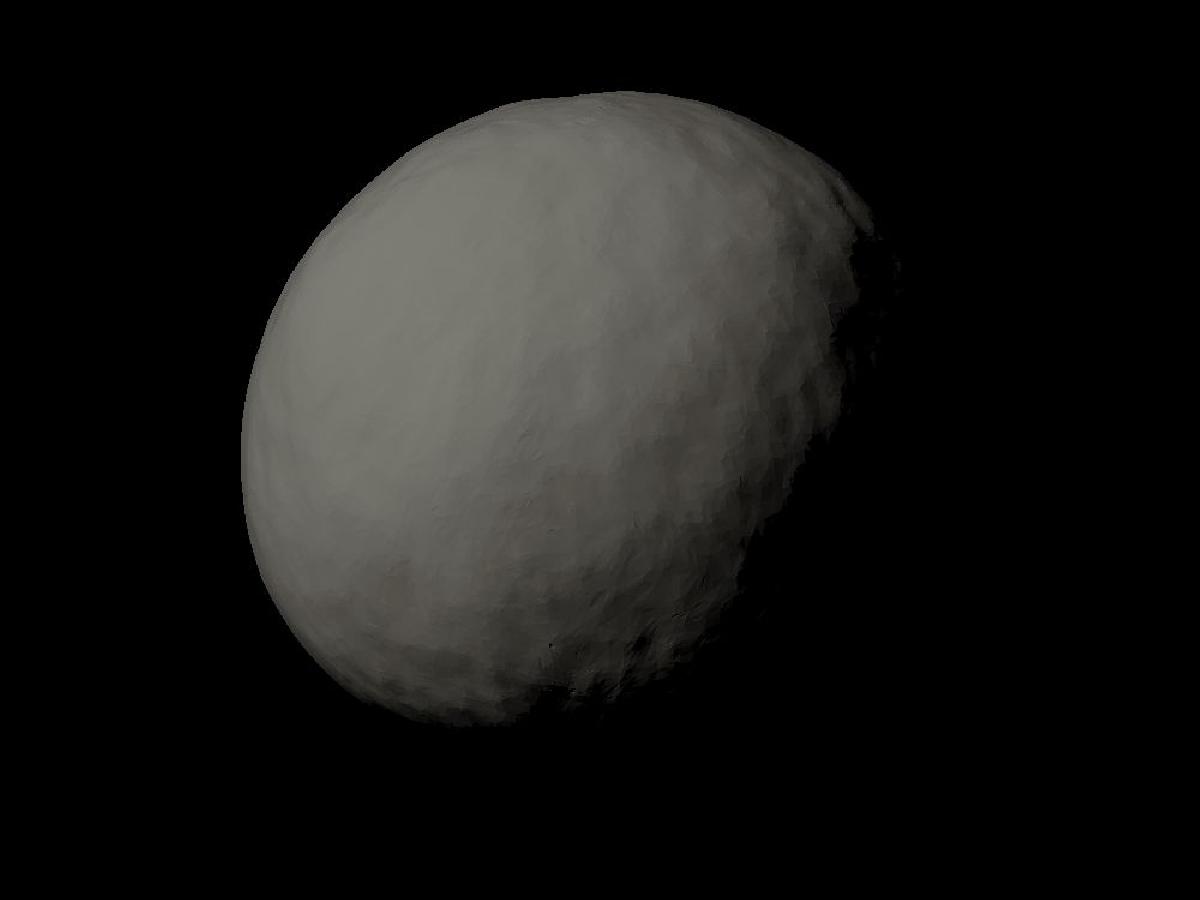Imprimir STL Ganimedes com topografia exagerada escalonada em um para sessenta milhoes. Modelo 3D - 3686218
Things 3D Fila
Ganimedes com topografia exagerada escalonada em um para sessenta milhoes.
Física e Astronomia
Se você ainda não tem uma máquina para imprimir este arquivo pode comprar uma impressora 3d aqui!

Você pode imprimir este modelo 3d com estes filamentos ou com estas resinas 3D.
Sobre o objeto 3D Ganimedes com topografia exagerada escalonada em um para sessenta milhoes.
Este é um arquivo desenvolvido e projetado com ferramenta CAD.
Se você ainda não sabe criar seu próprio modelo 3D eu te ensino neste artigo tutorial sobre Tinkercad.
Ganimedes com topografia exagerada escalonada em um para sessenta milhoes. foi projetado para Impressora 3D. This model was updated using the topographic map present on Steinbrügge (2019), exaggerated 30 times, since Ganymede topography is really flat. It was rendered using MATLAB R2016a. The file's names explained: name_1_x_10_y.stl is 1 : x * 10y. So _1_6_10_7 is 1:600000000 or one in 60 million.J3 GanymedeGanymede is the largest moon of Jupiter as well as of the Solar System. It's sometime called a "planet like moon", being larger in diameter than Mercury, but having a 45% of the planet mass. This is because it's largely composed of water ice, being the largest "icy body" (aka. an object composed of a great fraction of water, with a solid surface). Water is one of the least viscous material of celestial bodies. That's why objects with ice composition can be rounded at smaller size, like Mimas; or bigger objects like Ganymede can be extremely rounded, because when a moon or an asteroid melts (usually in its early history) it turns into a rounded shape, and a less viscous material could easily flow to fill the irregular terrain. Ganymede has a fully differentiated nucleus, rich in iron, which makes it the only moon with a substantial magnetic field. Its surface has two main types of geography: one old, dark, heavily cratered, similar to that of Callisto, and a younger, lighter and grooved terrain. However, this difference is not visible because of the low resolution of the topographical maps. Io, Europa and Ganymede are locked in a 1:2:4 orbit resonance, which means that each Ganymede's orbit around Jupiter, Europa makes 2, and Io makes 4.Type: Satellite.Orbit: Jupiter.Orbital period: 7.154 dComposition: Icy body. Differentiated interior. Subsurface ocean.Density: 1.936 g/cm3. Dimensions: 5268.2 km Model scale: 1:6x107 (9cm) 1:1.2x108 (4cm)ReferencesSteinbrügge, Gregor & Steinke, Teresa & Thor, Robin & Stark, Alexander & Hussmann, Hauke. (2019). Measuring Ganymede’s Librations with Laser Altimetry. Geosciences. 9. 320. 10.3390/geosciences9070320.Surf to STL function for MATLAB Other astronomical objects Object Scale [1:x] K = 103 (thousand)M = 106 (million)G = 109 (billion) Image Inner Solar System Mercury 20M, 60M, 120M Venus 60M, 120M, 250M Earth 60M, 120M, 250M Luna 10M, 20M, 60M Mars 20M, 60M, 120M Phobos and Deimos 200K, 500K Artificial Salyut 7 40, 48, 80, 160 Near Earth Asteroids Moshup and Squannit 8K, 20K, 40K Ra-Shalom 20K, 40K Castalia 8K, 20K, 40K Bacchus 8K, 20K Bennu 3K, 8K Ryugu 3K, 8K, 20K Geographos 40K, 80K Phaethon 40K, 80K Itokawa 3K, 8K Eros 80K, 200K, 500K Nereus 3K, 8K Mithra 20K, 40K Golevka 8K Toutatis 40K, 80K Main Asteroid Belt Gaspra 200K Annefrank 40K, 80K Braille 20K, 40K Vesta 2M, 4M, 10M Šteins 40K, 80K, 200K Iris 2M, 4M Hebe 1M, 2M, 4M Lutetia 500K, 1M, 2M Julia 1M, 2M, 4M Mathilde 500K, 1M Juno 2M, 4M Ceres 4M, 10M Pallas 4M, 10M Kleopatra 2M, 4M Ida 500K, 1M Psyche 2M, 4M Interamnia 2M, 4M Hygiea 2M, 4M, 10M Antiope 1M, 2M Jovian System Jupiter 500M, 1G Amalthea 2M, 4M Thebe 1M, 2M Io 20M, 60M Europa 20M, 60M Ganymede 60M, 120M Callisto 60M, 120M Saturn System Saturn 500M, 1G Pan, Daphnis and Atlas 80K, 200K, 500K, 1M Prometheus and Pandora 1M, 2M Janus and Epimetheus 2M, 4M Mimas 2M, 4M, 10M Methone, Anthe and Pallene 40K, 80K Enceladus 4M, 10M Tethys 4M, 10M, 20M Telesto and Calypso 200K, 500K Dione 4M, 10M, 20M Helene 500K, 1M Rhea 10M, 20M Titan 60M, 120M Hyperion 2M, 4M Iapetus 10M, 20M Phoebe 1M, 2M, 4M Uranian System Uranus 250M, 500M, 1G Puck 1M, 2M, 4M Miranda 4M, 10M Ariel 10M, 20M Umbriel 10M, 20M Titania 10M, 20M Oberon 10M, 20M Neptunian System Neptune 250M, 500M, 1G Larissa 2M, 4M Proteus 2M, 4M, 10M Triton 20M Comets Tempel 1 40K, 80K, 200K Wild 2 40K, 80K Churyumov-Gerasimenko 20K, 40K, 80K Hartley 2 20K, 40K, 80K Borrelly 40K, 80K, 200K Halley 80K, 200K Centaurs and TNOs Hidalgo 500K, 1M Chariklo 2M, 4M Pluto and Charon 10M, 20M Styx, Nix, Kerberos and Hydra 500K, 1M Haumea, Namaka and Hiʻiaka 10M, 20M Arrokoth 200K, 500K, 1M Largest TNOs and their moons 10M, 20M Extrasolar Exoplanets 120M, 250M, 500M Nearest white dwarfs 120M, 250M HD 189733 b 1G Pulsars 200K, 500K Cygnus X-1 accretion disk 10M, 20M Sky maps Heliosphere 7.5*1013, 1.5*1014 Constellations - CMBR 2*1028 Ancient Earth (540 Mya to 20 Mya) 60M, 120M, 250M Luna (4 Gya) 20M, 60M Speculative Planet Nine 250M, 500M Cube planet 60M, 120M, 250M Science Fiction Ghroth 4M, 10M Arda 60M, 120M B612 10, 20, 32, 40 Mesklin 500M, 1G Arrakis 60M, 120M Borg cube 8K, 20K, 40K Pern 60M, 120M Europa Monolith 200K, 500K Leonora Christine 500, 600, 1K, 3K Rama 80K, 200K, 500K Death Star 500K, 1M, 2M Starkiller Base 2M, 4M, 10M Nirn, Secunda and Masser 20M, 60M, 120M Independence Day mothership 2M, 4M, 10M
Não deixe de imprimir e compartilhar este modelo 3d. Não deixe sua impressora 3D parada. Mas se você não tem uma impressora 3D ainda, escolha a sua agora.

